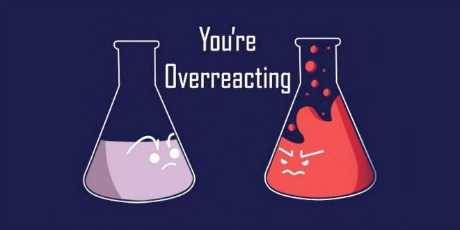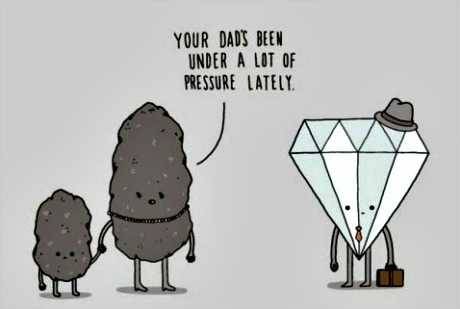Drunkscience4u - Drunk Science

More Posts from Drunkscience4u and Others

Primitive plants are the latest forms of Earth life to show they can survive in the harshness of space, and for many months. Cold-loving algae from the Arctic Circle have joined the space-travelling club, alongside bacteria, lichens and even simple animals called tardigrades.
Preliminary studies of the algae after their return to Earth from the International Space Station lend some weight to the “panspermia” theory, that comets and meteorites could potentially deliver life to otherwise sterile planets. The results also provide insights into the potential for human colonies on distant planets to grow crops brought from Earth.
The algae were of the Sphaerocystis species, codenamed CCCryo 101-99, and were returned to Earth in June last year after spending 530 days on a panel outside the ISS. While space-borne, they withstood the vacuum, temperatures ranging from -20 °C at night to 47.2 °C during the day, plus perpetual ultraviolet radiation of a strength that would destroy most life on Earth if not filtered out by the atmosphere.
“I’m sure that plants of many kinds have been on the ISS before, but on the inside, not the outside,” says Thomas Leya of the Fraunhofer Institute for Cell Therapy and Immunology in Potsdam, Germany, who organised the algae experiment. “As far as I know, this is the first report of plants exposed on the surface of the space station.”
Continue Reading.
Full trailer up TODAY! Click on the link in our bio to watch! #stem #funny #youtube #badjokes #lab #wine #drinking http://ift.tt/2kXXIDw








The Science Has Spoken: Pluto Will Never Be A Planet Again
“What’s perhaps most remarkable is that we can make a simple, mathematical relationship between a world’s mass and its orbital distance that can be scaled and applied to any star. If you’re above these lines, you’re a planet; if you’re below it, you’re not. Note that even the most massive dwarf planets would have to be closer to the Sun than Mercury is to reach planetary status. Note by how fantastically much each of our eight planets meets these criteria… and by how much all others miss it. And note that if you replaced the Earth with the Moon, it would barely make it as a planet.”
It was a harsh lesson in astronomy for all of us in 2006, when the International Astronomical Union released their official definition of a planet. While the innermost eight planets made the cut, Pluto did not. But given the discovery of large numbers of worlds in the Kuiper belt and beyond our Solar System, it became clear that we needed something even more than what the IAU gave us. We needed a way to look at any orbiting worlds around any star and determine whether they met a set of objective criteria for reaching planetary status. Recently, Alan Stern spoke up and introduced a geophysical definition of a planet, which would admit more than 100 members in our Solar System alone. But how does this stand up to what astronomers need to know?
As it turns out, not very well. But the IAU definition needs improving, too, and modern science is more than up to the challenge. See who does and doesn’t make the cut into true planetary status, and whether Planet Nine – if real – will make it, too!
-
 adventurouswind liked this · 3 months ago
adventurouswind liked this · 3 months ago -
 whitevvings-moved reblogged this · 3 months ago
whitevvings-moved reblogged this · 3 months ago -
 annita89t7pzmjcsh liked this · 6 months ago
annita89t7pzmjcsh liked this · 6 months ago -
 aspido-nero liked this · 1 year ago
aspido-nero liked this · 1 year ago -
 diatiwinthorn liked this · 1 year ago
diatiwinthorn liked this · 1 year ago -
 violetvapours reblogged this · 1 year ago
violetvapours reblogged this · 1 year ago -
 genericscenery reblogged this · 2 years ago
genericscenery reblogged this · 2 years ago -
 sheogorathplace liked this · 2 years ago
sheogorathplace liked this · 2 years ago -
 blacknprettyincloudcity liked this · 2 years ago
blacknprettyincloudcity liked this · 2 years ago -
 goldenshaun liked this · 2 years ago
goldenshaun liked this · 2 years ago -
 usuariodepapell liked this · 2 years ago
usuariodepapell liked this · 2 years ago -
 savoirferre reblogged this · 3 years ago
savoirferre reblogged this · 3 years ago -
 gaylienz liked this · 3 years ago
gaylienz liked this · 3 years ago -
 lilithwitchofthenight liked this · 3 years ago
lilithwitchofthenight liked this · 3 years ago -
 star-gayzin reblogged this · 3 years ago
star-gayzin reblogged this · 3 years ago -
 aglaydis reblogged this · 3 years ago
aglaydis reblogged this · 3 years ago
The official page of Drunk Science! An enthusiastic host performs simple experiments and then humorously explains the science behind the result, all while visibly drunk.
126 posts




















